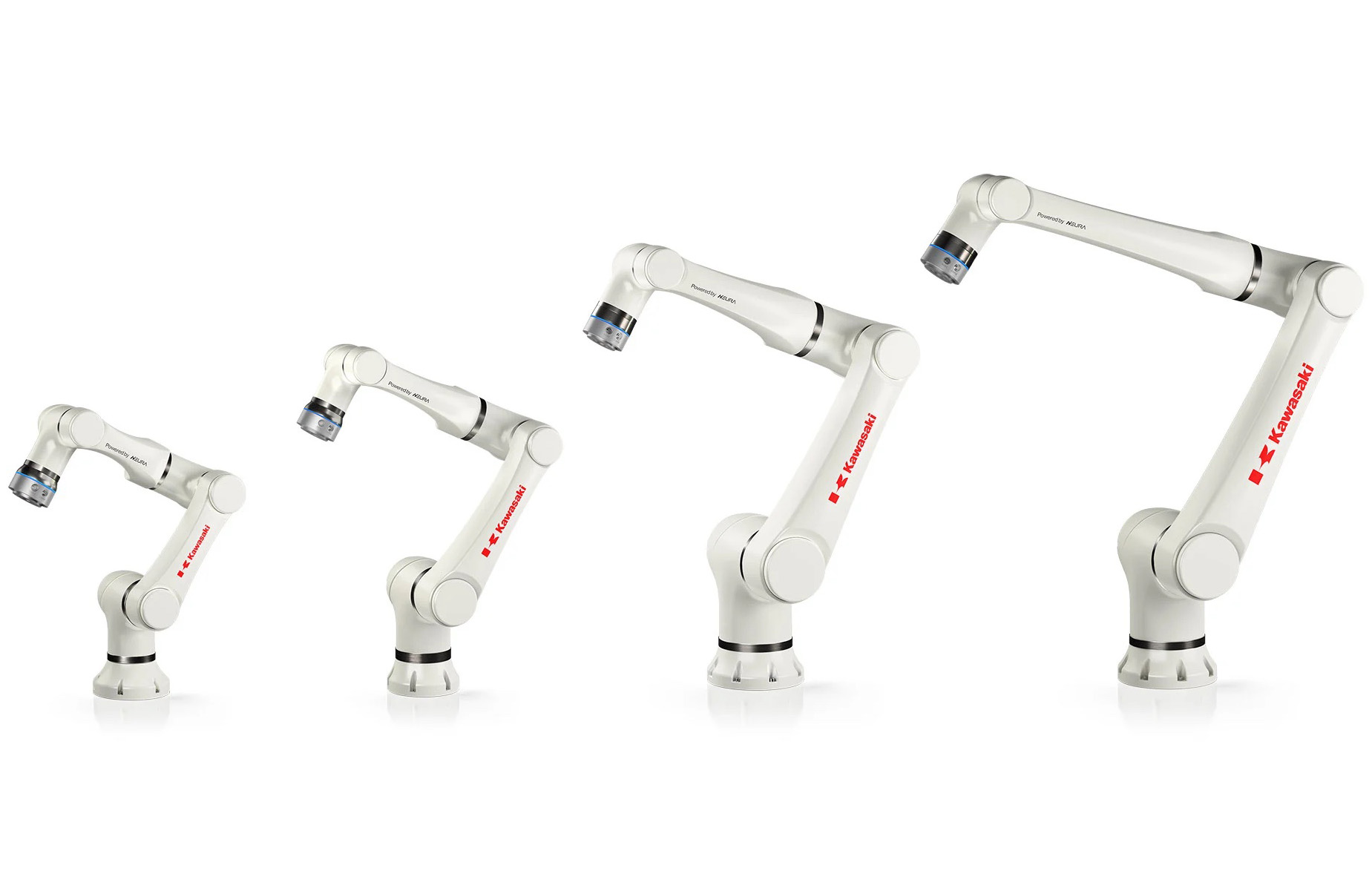Listen to this article


The CL Series of collaborative robots. | Source: Kawasaki Robotics
CHICAGO — Kawasaki Robotics (USA) Inc. gave a first look at its new CL family of collaborative robots at Automate this week. The company also showed off new applications using the Kawasaki R Series and BX Series of industrial robots.
“From our AI-enabled robots to our rich library of technology partners, it’s the collective use of human ingenuity that fuels Kawasaki’s product offerings,” stated Seiji Amazawa, president of Kawasaki Robotics. “Our goal is to harness industrial automation in a way that makes the possibilities virtually limitless for our customers, and our Automate showing will help to reinforce that.”
Kawasaki Robotic added that the CL Series and new applications demonstrate its “commitment to continually optimizing its product offerings, aided by its technology-agnostic stance and expanding network of partners.” The Wixom, Mich.-based company is a unit of Kawasaki Heavy Industries, which has more than 50 years of automation experience and is a leading supplier of industrial robots.
 Submit your presentation idea now.
Submit your presentation idea now.
CL series combines cobot, industrial features
Kawasaki Robotics claimed its CL series combines the safety and intuitiveness of collaborative robots with a robust design that “unlocks the speed and productivity of industrial robotics.” The new robots, designed and built in Germany, use robot assistance technology from NEURA Robotics, a Kawasaki partner.
Kawasaki had a dual-armed cobot nine years ago, but it had an absence in its product range, Alexandre Boffi, manager for general industries sales at Kawasaki, told The Robot Report.
“We observed what the industry needed — more repeatability, accuracy, robustness, and environmental protection,” he said. “A cobot also had to do what Kawasaki’s industrial robots can do, which led to our collaboration with NEURA.”
The new cobots can reach a speed of 200º/s and repeatability of ±0.02 mm (0.0007 in.). The robots have payload capacities and reaches of 3 kg/590 mm (6.6 lb./23.2 in.), 5 kg/800 mm (11 lb./31.5 in.), 8 kg/1,300 mm (17.6 lb./51.2 in.), and 10 kg/1,000 mm (22 lb./39.3 in.), respectively.
“Customers don’t want to sacrifice speed, accuracy, or reliability,” said Boffi. “Ease of use is driving demand for cobots.”
In addition, the CL series has free mounting orientations, small footprints, and IP66 classification. Kawasaki noted that the cobots’ components include integrated 24-bit encoders, high resolution, and lightweight construction.
The CL series also includes an intuitive user interface and proprietary safety architecture to facilitate human-robot collaboration, said the company.
Like NEURA’s 4NE-1 in the adjacent booth, Kawasaki’s “skunkworks” has worked on its own humanoid robot, the CalledBoffi said.
“Humanoids are like Formula 1 racecars compared with passenger cars,” he said. “They’ll result in smaller controllers and optimized motion control, like our KRNX API (application programming interface), which provides low latency, real-time control, and full access to the BIOS. We’re really focused on building the best tools to help businesses.”
Kawasaki Robotics jointly shows new applications
Kawasaki also demonstrated applications developed with its partners, such as an adaptable finishing system designed by Advanced Machine & Tool (AMT) Precision Parts that can handle diverse materials and surface types. It also showed unstructured parcel sorting with the Kawasaki R Series and Mech Mind‘s 3D camera and AI-powered software.
CRG Automation displayed multi-SKU palletizing and depalletizing using a BX130X robot and an automated corner-board application using a RS00L robot. Olis Robotics‘ Olis Connect edge-hosted product provided remote control and monitoring of the entire system.
“As customer demand for products of all kinds increases and the unceasing need for skilled labor remains, robotics and automation are clear answers to this widespread industry problem,” said Amazawa. “We are motivated by our passion for creating the best possible robotic solutions to ensure our customers see nothing but excitement, potential, and growth when they look to the future.”
Kawasaki Robotics and Olis Robotics have also jointly offered robots and controls they said will enable customers to restart production faster, reduce troubleshooting and downtime costs by up to 90%, and gain access to expert support more quickly.





GIPHY App Key not set. Please check settings